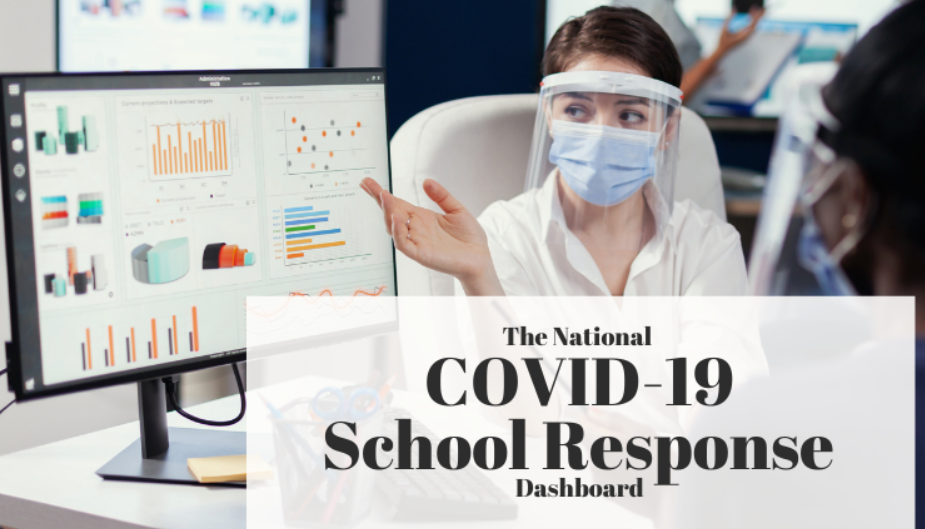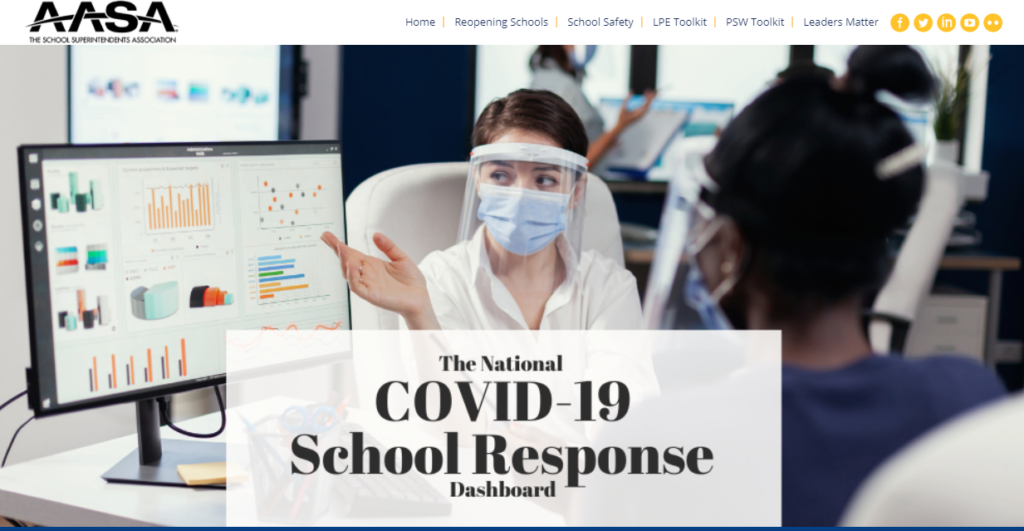AASA’s National COVID-19 School Response Dashboard offers schools real-time COVID-19 data

ASSA’s National COVID-19 School Response Dashboard offers schools real-time data that maps school responses to the pandemic across the U.S.
This information allows school system leaders, policymakers and the general public to make informed decisions on the current conditions in their own areas—as well as others—to adapt to changing environments. The platform helps educators leverage data to open schools safely for staff and students.
The dashboard partnership is comprised of The School Superintendents Association, Brown University Professor of Economics Emily Oster; the National Association of Elementary School Principals; the National Association of Secondary School Principals; and Qualtrics, the experience management company.
“The pandemic is now a year old and school districts are continuing to grapple with the negative impact the outbreak has caused throughout their communities,” said Daniel A. Domenech, executive director, AASA. “Our top priority is to keep schools, staff and students safe. This invaluable resource should help education leaders make data-driven decisions on regularly updated information made available from districts nationwide.”
“Local education leaders making school reopening decisions must have access to timely, accurate data,” said L. Earl Franks, executive director, NAESP. “This dashboard provides real-time information on the trends and mitigation efforts across the country that can help schools adapt their plans as environments change and help ensure schools can open safely when conditions on the ground allow.”
“Principals want their students and educators safely back in their respective buildings, actively engaging in in-person learning and re-establishing the personal connections we’ve all missed for almost a full calendar year,” said Ronn Nozoe, chief executive officer, NASSP. “This dashboard contributes to a reliable set of data principals can use to address the safety and well-being of the school community and provide quality, in-person learning experiences.”
Hundreds of schools across the country have joined the effort to generate interest in the platform, originally created by Qualtrics. The dashboard provides information at the state level such as: school type (public, independent, etc.); average student infection rate (based on a reported two-week period); average staff infection rate (based on a reported two-week period); and whether the school is currently in-person, hybrid or fully virtual. The dashboard will be continuously updated as new districts join this effort and as existing districts provide new information on details such as case count and learning model.
Data will be visualized in a single dashboard that empowers school leaders, policymakers and the general public to examine current conditions in their own communities—as well as compare against other areas—to adapt to changing environments and make data-driven teaching and learning decisions as they continue to navigate the academic year.
Enrollment:
- Are you a superintendent and want to enroll your school district? Complete our district enrollment survey here!
- Are you a principal and want to enroll your school directly? Begin with the baseline survey here.
- For specific questions, please contact Noelle Ellerson Ng, AASA associate executive director, advocacy and governance, at nellerson@aasa.org.

